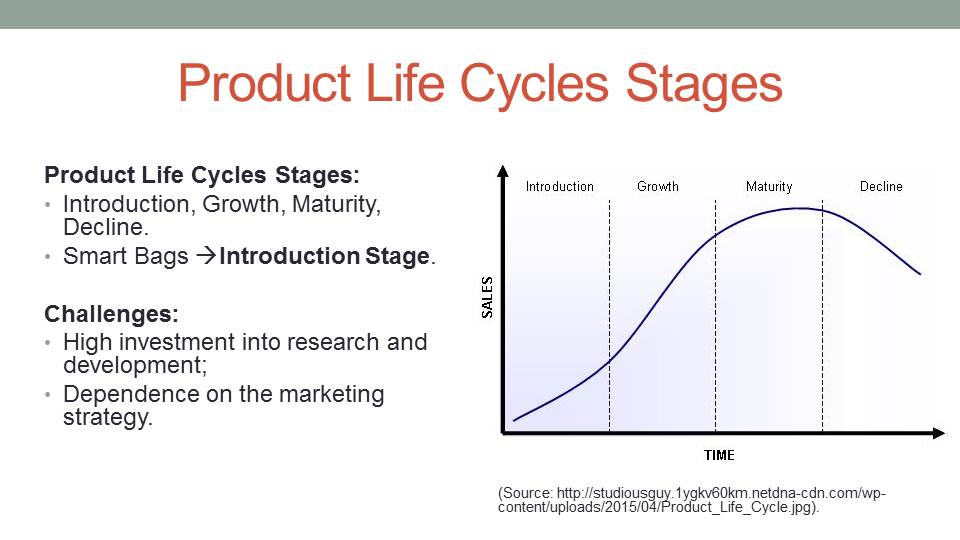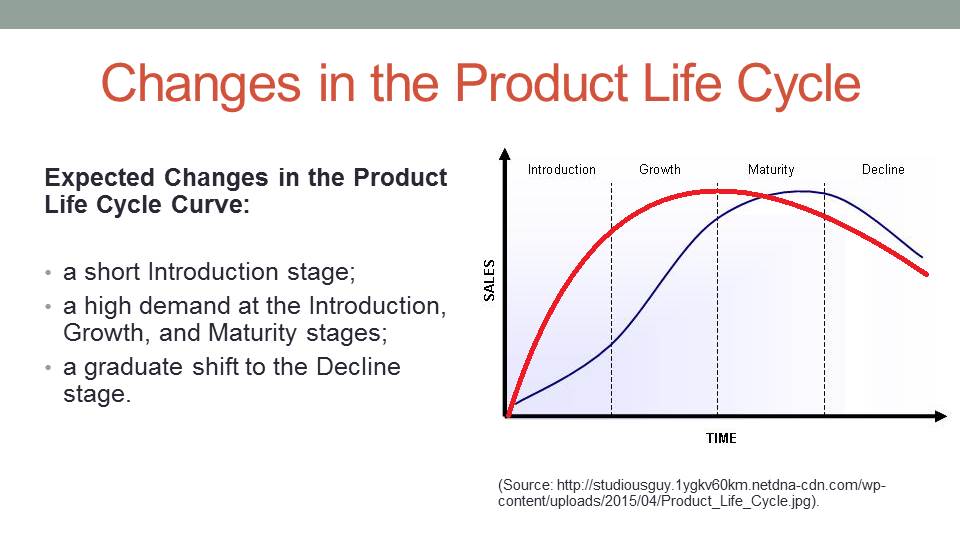Product Life Cycles Stages
Product Life Cycles Stages:
- Introduction, Growth, Maturity, Decline;
- Smart Bags → Introduction Stage.
Challenges:
- High investment into research and development;
- Dependence on the marketing strategy.
Product life cycles stages include Introduction, Growth, Maturity, and Decline (Product life cycle stages 2017). Currently, Smart Bags are at the Introduction stage. The main challenges associated with this stage are the necessity of high investment into the project and dependence on the marketing strategy. At this stage, sales are usually low, and the focus is on attracting consumers with the help of an effective marketing campaign. The production and marketing of Smart Bags depend on significant investments into research and development, as well as on the attraction of target consumers who are interested in business traveling.

Changes in the Product Life Cycle
Expected Changes in the Product Life Cycle Curve:
- a short Introduction stage;
- a high demand at the Introduction, Growth, and Maturity stages;
- a graduate shift to the Decline stage.
According to the product life cycle curve, the lowest sales are observed at Introduction and Decline stages, and the Introduction stage can be comparably long (Product life cycle challenges 2017). However, for Smart Bags, it is possible to expect the following changes or differences in the product life cycle: a) the Introduction stage is short because of attractive features and price of the proposed product; b) the demand for products at the Introduction, Growth, and Maturity stages is high because of its quality and characteristics; c) the shift to the Decline stage is graduate because of attracting more consumers who are interested in the product and associated decreases in its price.

Reference List
Product life cycle challenges 2017, Web.
Product life cycle stages 2017, Web.